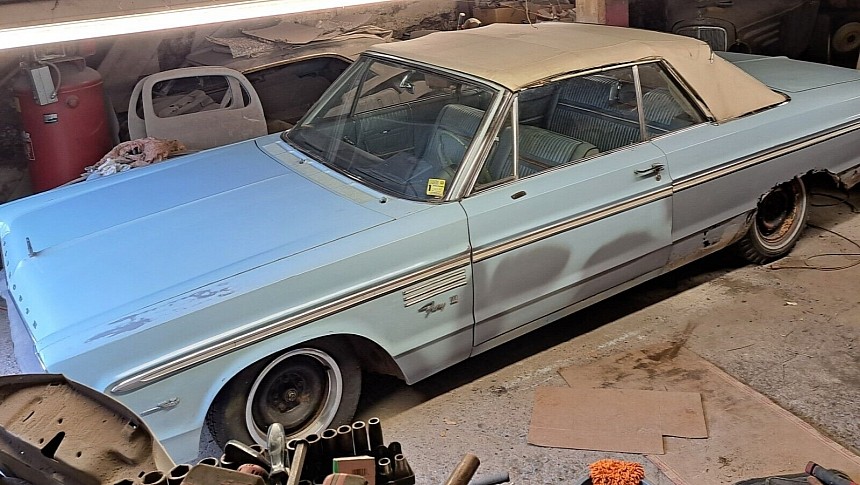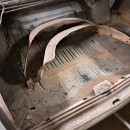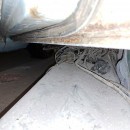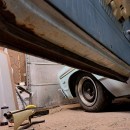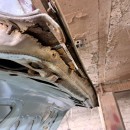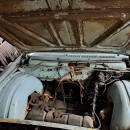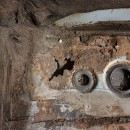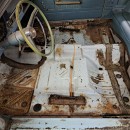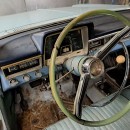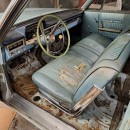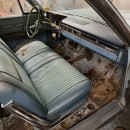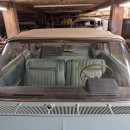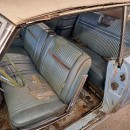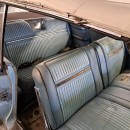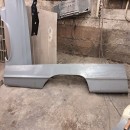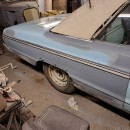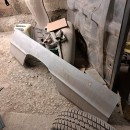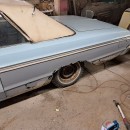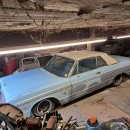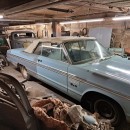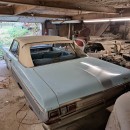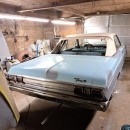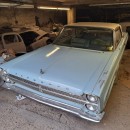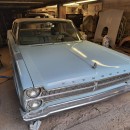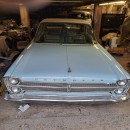Chrysler had big ambitions for the fourth-generation Fury, turning the car into a full-size model based on the C-body platform.
The goal was simple: compete against the Chevrolet Impala and make Chrysler a more important player in the full-size market already dominated by its long-time American rival.
The Sport Fury was the model supposed to appeal to Impala buyers, coming with the best Plymouth could offer on this model year, including more potent engines.
With nearly 330,000 units rolling off the assembly lines, the Fury could hardly be considered an Impala killer. After all, 1965 was one of the best years in Impala's history, as Chevrolet's model became the first car in the US to sell more than 1 million units. As a result, Fury's performance was still impressive, especially because Chevrolet's full-size lineup was already an established presence in the market.
The new-generation Fury was available in four trim levels. The base version was the Fury I, while the Fury II offered modest upgrades and two body styles, namely two- and four-door sedans and station wagons. The Fury III was aimed at customers looking for more options and a luxurious ride, joining the lineup with a coupe and a convertible. The top-of-the-range choice was the Sport Fury, which could only be had as a hardtop coupe or convertible.
As a direct Impala competitor, the Fury adopted an engine strategy similar to Chevrolet's. The car was available with many choices, including lazy six-cylinder mills and potent V8s offering a more thrilling experience behind the wheel.
The base unit was the 225 six-cylinder. It was typically ordered by Fury I customers, but the most popular engines for this model year were the 318 and the 383. The icing on the cake was the 426 rated at 425 horsepower.
Enter this intriguing Fury III convertible.
Posted online by eBay seller mybad32, this convertible is a project fighting for its original glory, coming in a condition that looks great at first but gets worse as you inspect the car.
It doesn’t mean it's a rust bucket or anything close, but the Fury has the typical problems of an icon that spent years in storage. The seller didn’t share specifics on the time away from the road, but it's safe to assume this convertible hasn’t seen the tarmac in many years.
The rust is a solid indication that the vehicle has been in hiding for a while. The floors aren't yet wrecked, but they'll still require some work, while the trunk pan is much worse and will probably need to be replaced. The rust has also made its way to other metal parts, including the quarter panels, so despite the Fury looking solid at first glance, you'll discover that it needs a ton of work to get back to a tip-top shape.
It's unclear if the paint is original, but if it is, hats off to Plymouth for spraying a finish that survived the test of time with flying colors. It shows its age, but this Fury III looks like a solid survivor that could escape without a full respray depending on the angle.
The interior looks surprising, and probably the best thing about it is that it's still complete. It's proof the vehicle did not serve as a donor for another project, though I wonder if everything is still original. The Fury doesn’t look like a molested or restored model, so chances are it retains most of the parts that it was wearing the day when it rolled off the assembly lines.
The driver's seat requires particular attention, and the only thing that is missing is the carpet.
Unfortunately, the engine doesn’t bring any good news, though it depends on your restoration plans for the car. The original 383 fitted by Plymouth is no longer there, so you'll find a lot of clean, fresh air when opening the hood. Theoretically, the lack of an engine is horrible news for someone who hoped to bring this Fury III back to factory conditions, but at the same time, it also leaves the door open to a restomod with a more potent engine.
A 440 would fit the Fury like a glove – Plymouth added this mill to the lineup in 1967, specifically to make the Sport Fury a more compelling rival to the Impala SS.
Eventually, this Fury III ticks the essential boxes for a restomod candidate, and probably the best thing is that it doesn’t cost a fortune. The bidding starts at $3,000, and considering nobody entered the race to take it home, there's a good chance a single bid would secure the car. If you want to see it in person, the vehicle is parked In Kirkwood, New York, and you'll need a trailer to take it home, given the lack of an engine.
The auction is set to end in approximately three days.
The Sport Fury was the model supposed to appeal to Impala buyers, coming with the best Plymouth could offer on this model year, including more potent engines.
With nearly 330,000 units rolling off the assembly lines, the Fury could hardly be considered an Impala killer. After all, 1965 was one of the best years in Impala's history, as Chevrolet's model became the first car in the US to sell more than 1 million units. As a result, Fury's performance was still impressive, especially because Chevrolet's full-size lineup was already an established presence in the market.
The new-generation Fury was available in four trim levels. The base version was the Fury I, while the Fury II offered modest upgrades and two body styles, namely two- and four-door sedans and station wagons. The Fury III was aimed at customers looking for more options and a luxurious ride, joining the lineup with a coupe and a convertible. The top-of-the-range choice was the Sport Fury, which could only be had as a hardtop coupe or convertible.
As a direct Impala competitor, the Fury adopted an engine strategy similar to Chevrolet's. The car was available with many choices, including lazy six-cylinder mills and potent V8s offering a more thrilling experience behind the wheel.
The base unit was the 225 six-cylinder. It was typically ordered by Fury I customers, but the most popular engines for this model year were the 318 and the 383. The icing on the cake was the 426 rated at 425 horsepower.
Enter this intriguing Fury III convertible.
It doesn’t mean it's a rust bucket or anything close, but the Fury has the typical problems of an icon that spent years in storage. The seller didn’t share specifics on the time away from the road, but it's safe to assume this convertible hasn’t seen the tarmac in many years.
The rust is a solid indication that the vehicle has been in hiding for a while. The floors aren't yet wrecked, but they'll still require some work, while the trunk pan is much worse and will probably need to be replaced. The rust has also made its way to other metal parts, including the quarter panels, so despite the Fury looking solid at first glance, you'll discover that it needs a ton of work to get back to a tip-top shape.
It's unclear if the paint is original, but if it is, hats off to Plymouth for spraying a finish that survived the test of time with flying colors. It shows its age, but this Fury III looks like a solid survivor that could escape without a full respray depending on the angle.
The driver's seat requires particular attention, and the only thing that is missing is the carpet.
Unfortunately, the engine doesn’t bring any good news, though it depends on your restoration plans for the car. The original 383 fitted by Plymouth is no longer there, so you'll find a lot of clean, fresh air when opening the hood. Theoretically, the lack of an engine is horrible news for someone who hoped to bring this Fury III back to factory conditions, but at the same time, it also leaves the door open to a restomod with a more potent engine.
A 440 would fit the Fury like a glove – Plymouth added this mill to the lineup in 1967, specifically to make the Sport Fury a more compelling rival to the Impala SS.
The auction is set to end in approximately three days.
